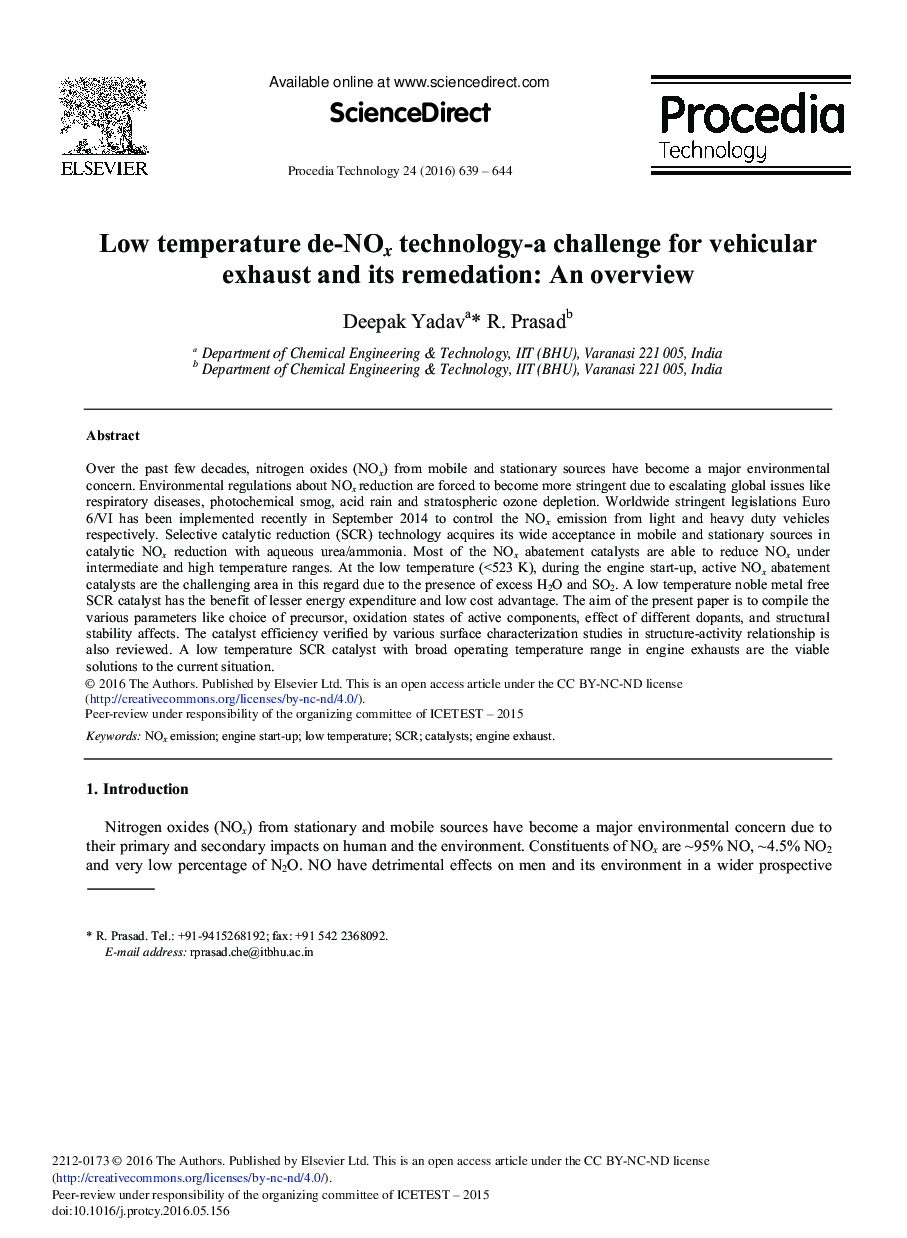| کد مقاله | کد نشریه | سال انتشار | مقاله انگلیسی | نسخه تمام متن |
|---|---|---|---|---|
| 490706 | 717707 | 2016 | 6 صفحه PDF | دانلود رایگان |

Over the past few decades, nitrogen oxides (NOx) from mobile and stationary sources have become a major environmental concern. Environmental regulations about NOx reduction are forced to become more stringent due to escalating global issues like respiratory diseases, photochemical smog, acid rain and stratospheric ozone depletion. Worldwide stringent legislations Euro 6/VI has been implemented recently in September 2014 to control the NOx emission from light and heavy duty vehicles respectively. Selective catalytic reduction (SCR) technology acquires its wide acceptance in mobile and stationary sources in catalytic NOx reduction with aqueous urea/ammonia. Most of the NOx abatement catalysts are able to reduce NOx under intermediate and high temperature ranges. At the low temperature (<523 K), during the engine start-up, active NOx abatement catalysts are the challenging area in this regard due to the presence of excess H2O and SO2. A low temperature noble metal free SCR catalyst has the benefit of lesser energy expenditure and low cost advantage. The aim of the present paper is to compile the various parameters like choice of precursor, oxidation states of active components, effect of different dopants, and structural stability affects. The catalyst efficiency verified by various surface characterization studies in structure-activity relationship is also reviewed. A low temperature SCR catalyst with broad operating temperature range in engine exhausts are the viable solutions to the current situation.
Journal: Procedia Technology - Volume 24, 2016, Pages 639–644